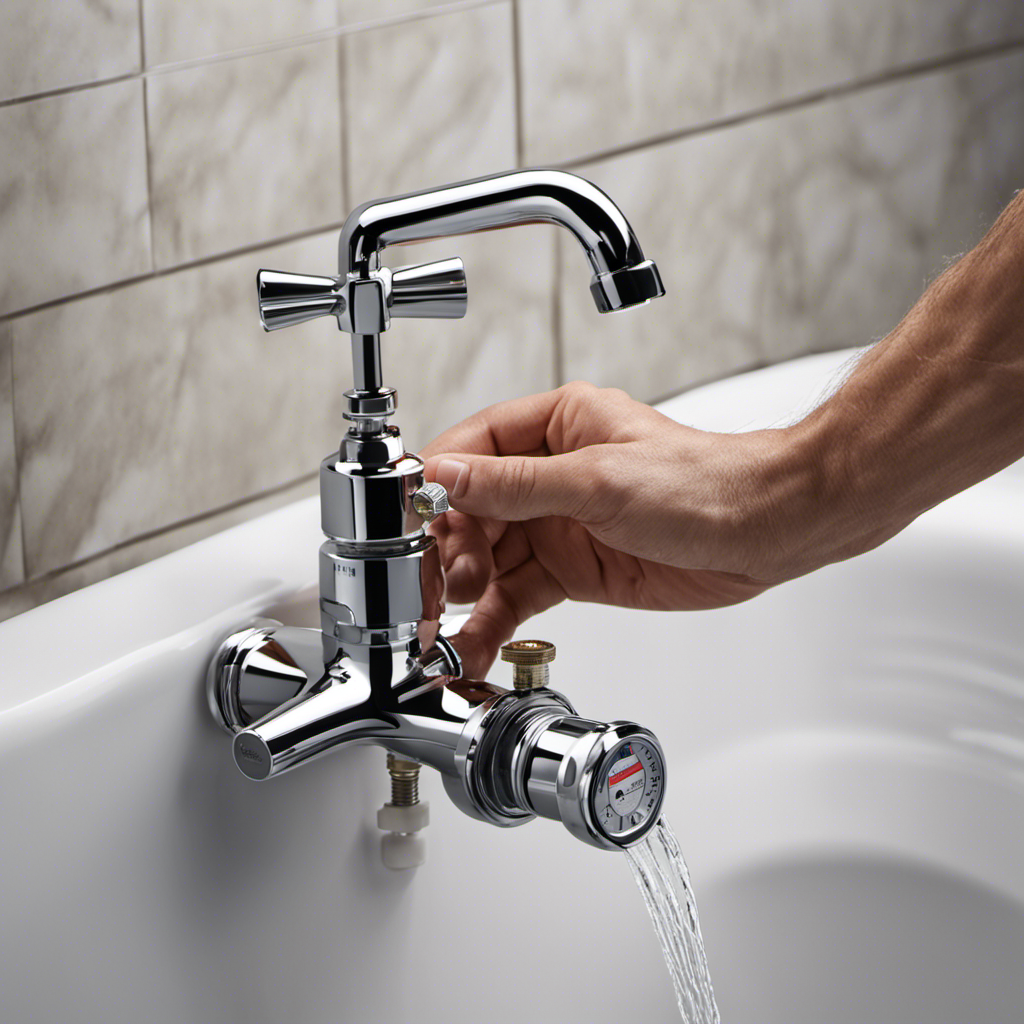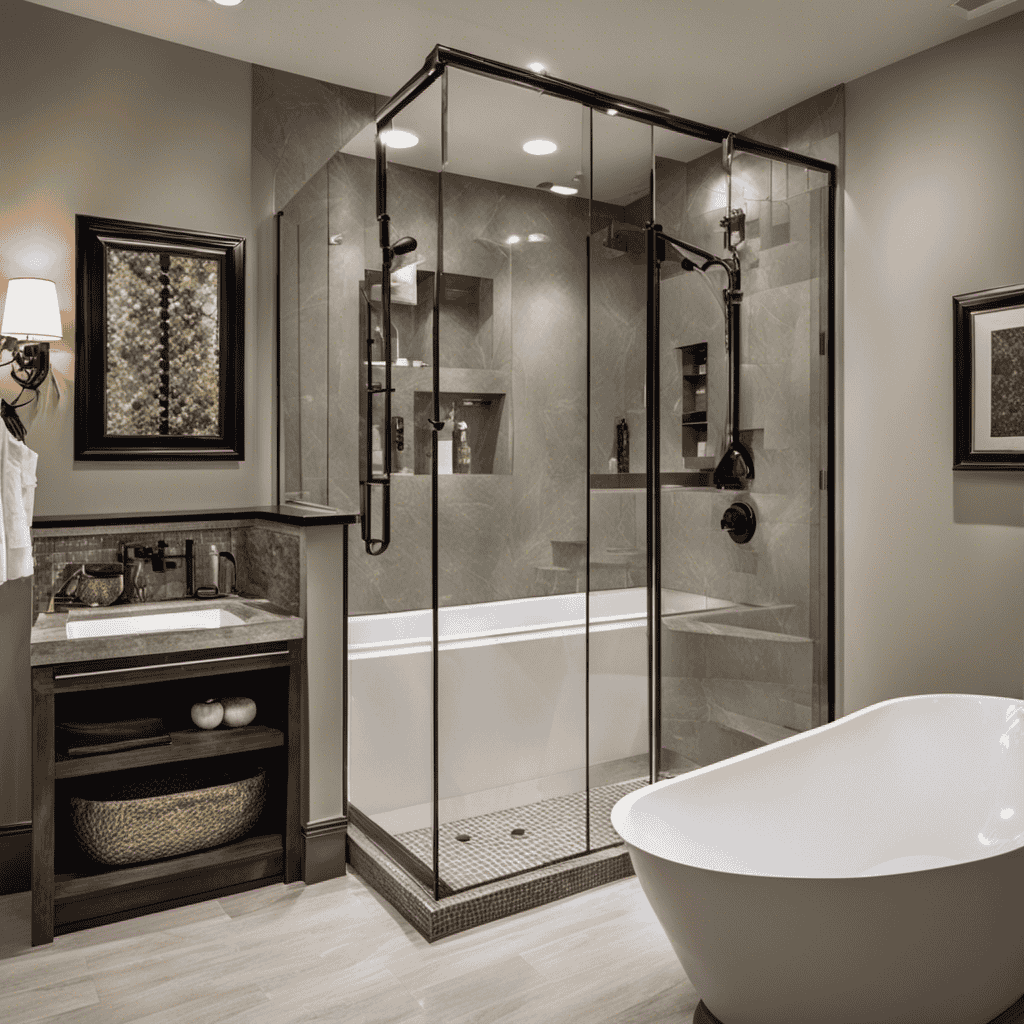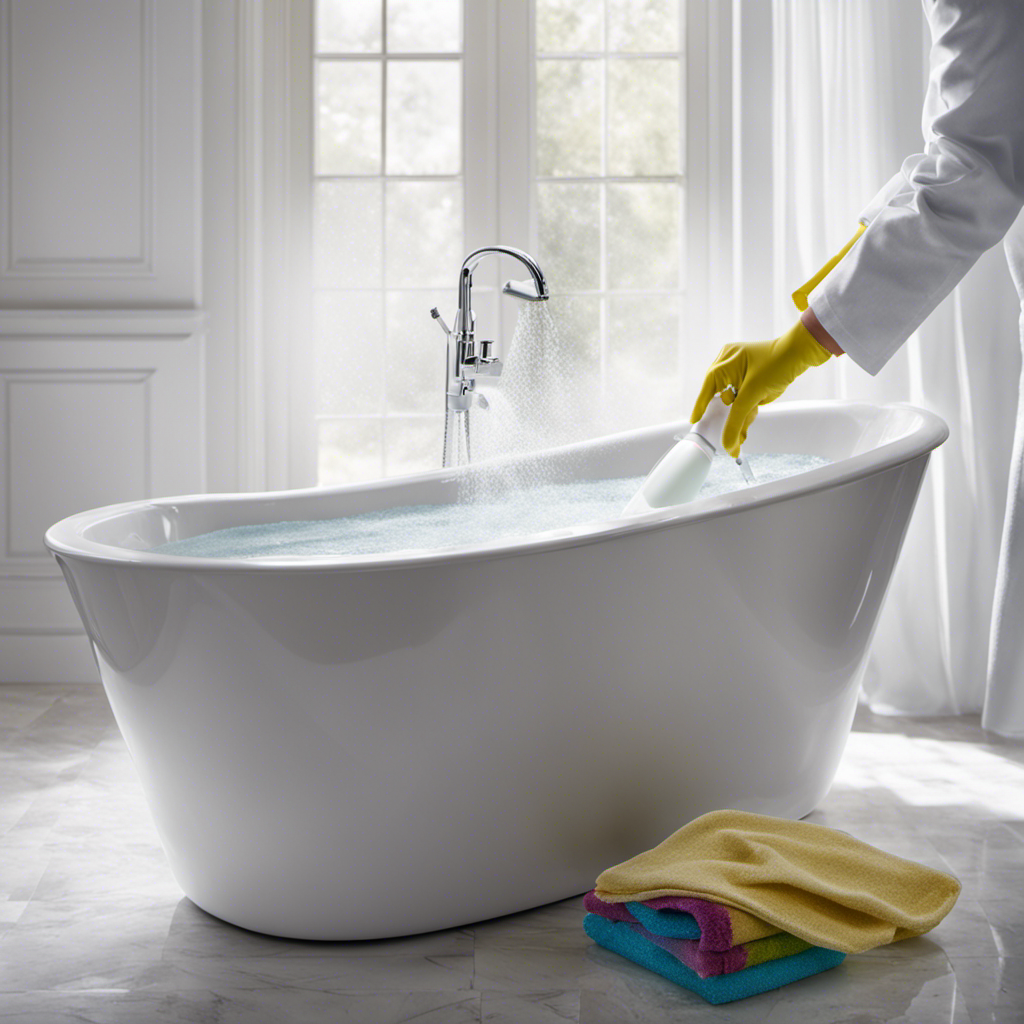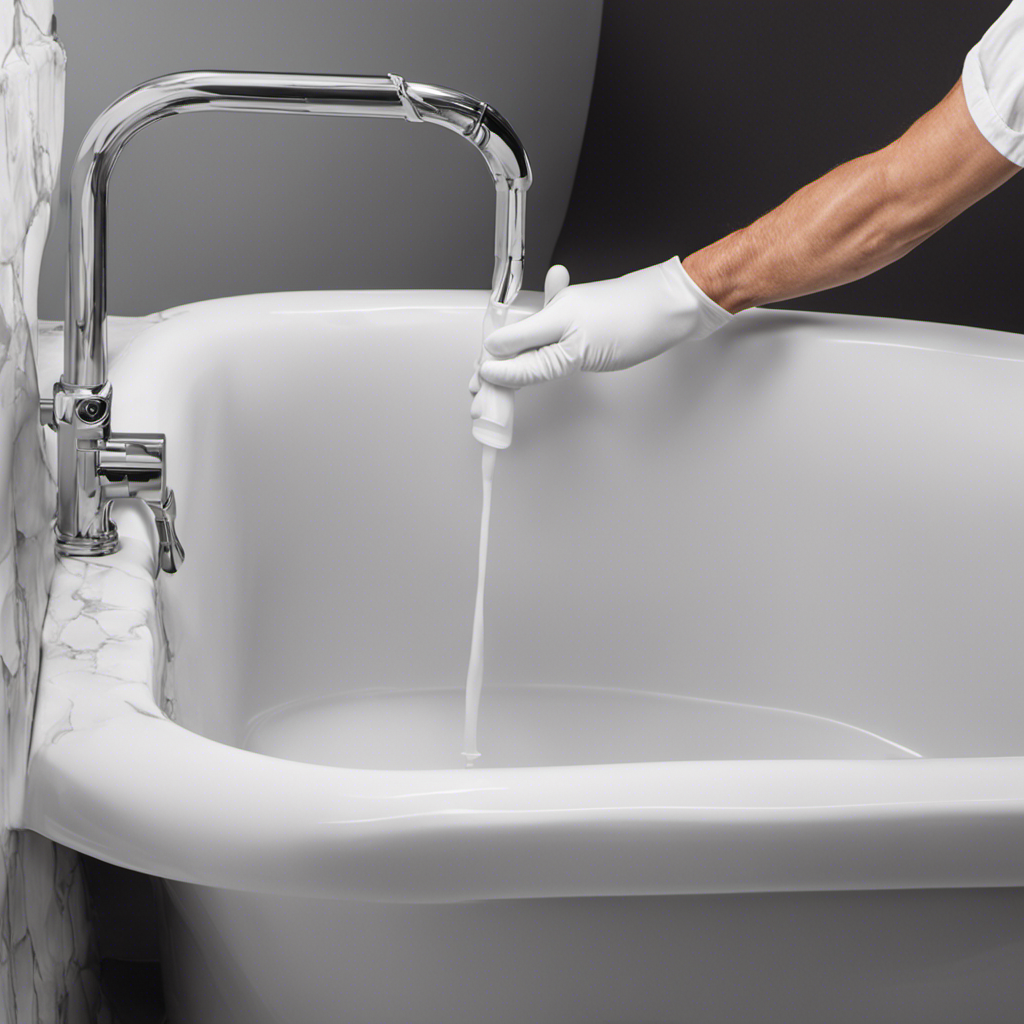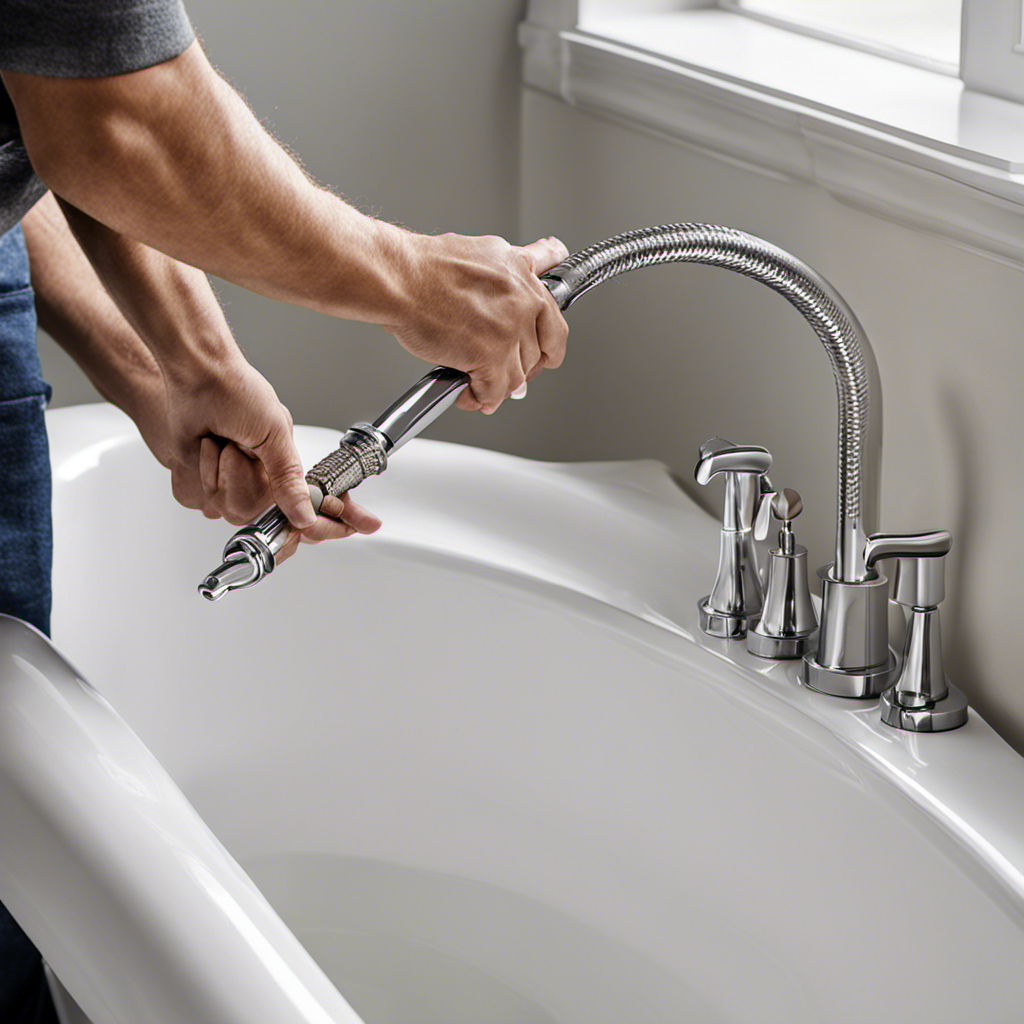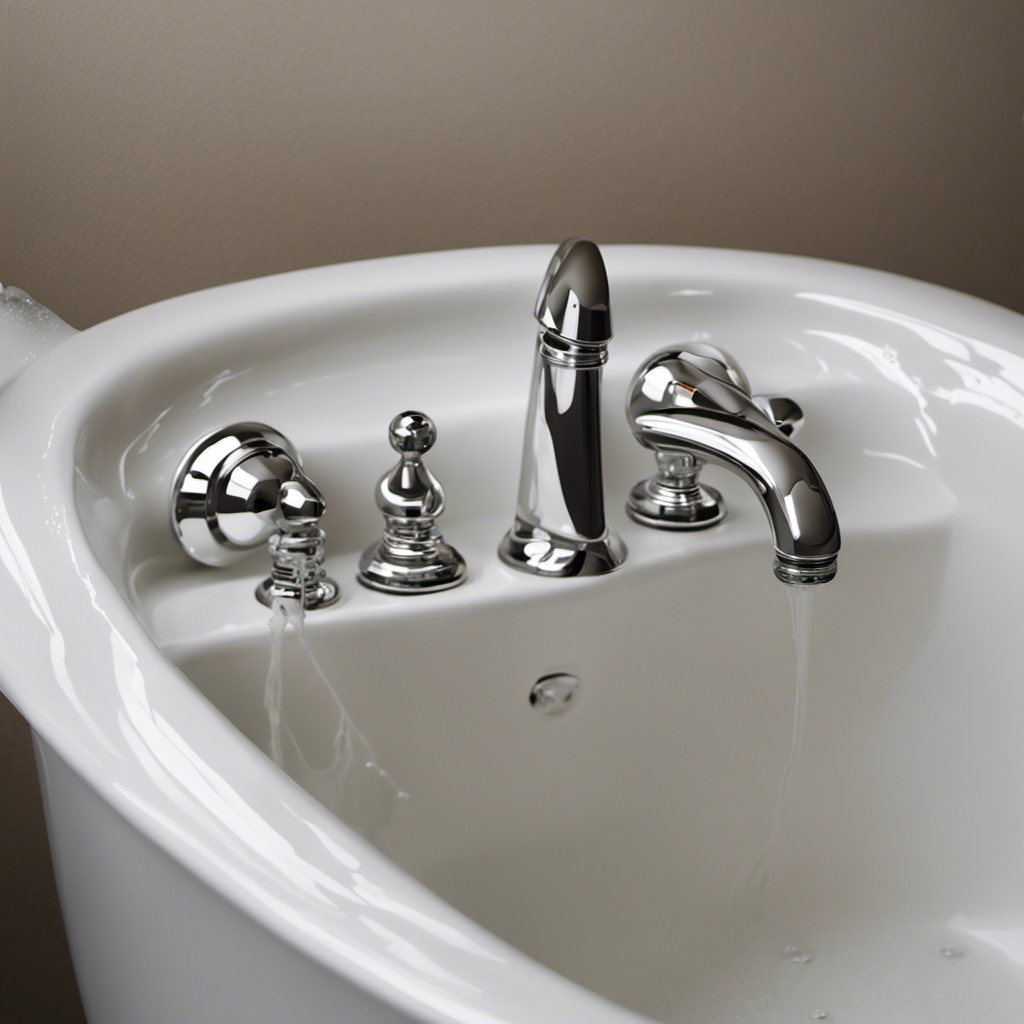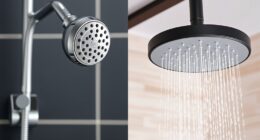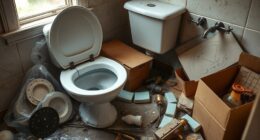So, you’ve noticed a frustratingly weak flow of hot water in your bathtub, huh? Well, fear not, my friend, because I’ve got just the solution for you!
In this handy guide, I’ll walk you through the steps to fix that pesky low hot water pressure once and for all.
From checking the water supply valve to adjusting the water pressure regulator, we’ll cover all the bases.
No need to panic or call a plumber just yet – let’s tackle this problem head-on together!
Key Takeaways
- Check and adjust the water supply valve to ensure it is fully open.
- Inspect and clean the showerhead and faucet to remove any debris or blockages.
- Clear mineral deposits from pipes by running a vinegar-water mixture through them.
- Consider calling a professional plumber if troubleshooting steps do not resolve the issue.
Checking the Water Supply Valve
First, you should check if the water supply valve is fully open. This is an important step in troubleshooting low hot water pressure in your bathtub.
To do this, locate the water supply valve, usually found near the water heater or under the sink. Turn the valve clockwise to ensure it is fully open.
If the valve is already open, you may need to replace faulty valves to resolve the issue. Faulty valves can restrict the flow of water, causing low pressure.
Additionally, while checking the water supply valve, it’s a good idea to inspect for any leaks. Leaks can also contribute to low pressure and should be addressed promptly.
Inspecting the Showerhead and Faucet
Next, you’ll want to check the showerhead and faucet for any potential issues. Here are four common issues to look out for and cleaning methods to resolve them:
-
Clogged showerhead: Over time, mineral deposits can build up and restrict water flow. To clean, remove the showerhead and soak it in a mixture of vinegar and water. Scrub away any remaining debris and reinstall.
-
Faulty showerhead diverter: If water pressure is low only in the bathtub, the diverter may be to blame. Inspect it for any signs of damage or blockage. If necessary, replace the diverter to restore proper water pressure.
-
Worn-out faucet cartridge: A worn-out cartridge can cause low hot water pressure. Turn off the water supply, remove the faucet handle, and replace the cartridge. This should improve the flow of hot water.
-
Plumbing blockage: Blockages in the pipes can also lead to low water pressure. If cleaning the showerhead and faucet doesn’t help, consider contacting a professional plumber to inspect and clear any blockages in the plumbing system.
Clearing Mineral Deposits From the Pipes
To resolve the issue of mineral deposits in your pipes, you can try using a mixture of vinegar and water to clear them out. Flushing the pipes with a descaling solution is a simple and effective method to remove these deposits.
Start by turning off the water supply to the affected area. Then, mix equal parts of white vinegar and water in a container. Attach a hose to the affected pipe and immerse the other end in the vinegar-water mixture. Turn on the water supply and let it run through the pipe for about 15-30 minutes. This will help dissolve and loosen the mineral deposits.
After the flushing process, turn off the supply and remove the hose. Finally, turn on the water supply again to ensure that the pipes are clear of any remaining deposits.
Adjusting the Water Pressure Regulator
You can easily adjust the water pressure regulator by turning the screw counterclockwise to decrease the pressure or clockwise to increase it. Adjusting the water pressure regulator is a common troubleshooting step when dealing with low hot water pressure in the bathtub.
Here are four potential causes and troubleshooting steps to consider:
-
Clogged aerator: Remove the aerator from the end of the faucet and clean it thoroughly to remove any debris that may be blocking the flow of water.
-
Faulty pressure regulator: Check if the pressure regulator is functioning properly. If not, it may need to be replaced.
-
Partially closed shut-off valve: Ensure that the shut-off valve supplying water to the bathtub is fully open. If it is partially closed, it can restrict the water flow.
-
Water line blockage: Check for any blockages in the water lines leading to the bathtub. If there are any obstructions, they will need to be cleared.
If these troubleshooting steps do not resolve the issue, it may be necessary to call a professional plumber to further diagnose and fix the problem.
Calling a Professional Plumber
If the troubleshooting steps mentioned earlier do not resolve the issue, it may be time to consider calling a professional plumber for assistance.
While DIY troubleshooting techniques can often be effective in resolving minor issues, there are certain situations where the expertise of a plumber is necessary.
A professional plumber has the knowledge and experience to accurately diagnose and fix complex plumbing problems that may be causing low hot water pressure in your bathtub.
They have access to specialized tools and equipment that may not be readily available to homeowners.
Additionally, hiring a plumber can save you time and frustration by ensuring that the issue is resolved correctly the first time.
While there may be cost-effective alternatives to hiring a plumber, such as attempting to fix the problem yourself or seeking advice from a plumbing professional, in some cases, calling a professional plumber is the best course of action to ensure a proper and long-lasting fix.
Conclusion
To conclude, fixing low hot water pressure in the bathtub requires a systematic approach. First, check the water supply valve to ensure it is fully open. Next, inspect the showerhead and faucet for any clogs or blockages that may be restricting water flow. Clearing mineral deposits from the pipes can also help improve water pressure. Finally, adjusting the water pressure regulator can help regulate the flow of water. If these solutions don’t work, it’s best to call a professional plumber.
Interestingly, according to a survey conducted by the Plumbing Manufacturers International, 80% of homeowners experience low water pressure at some point, highlighting the common nature of this problem.
